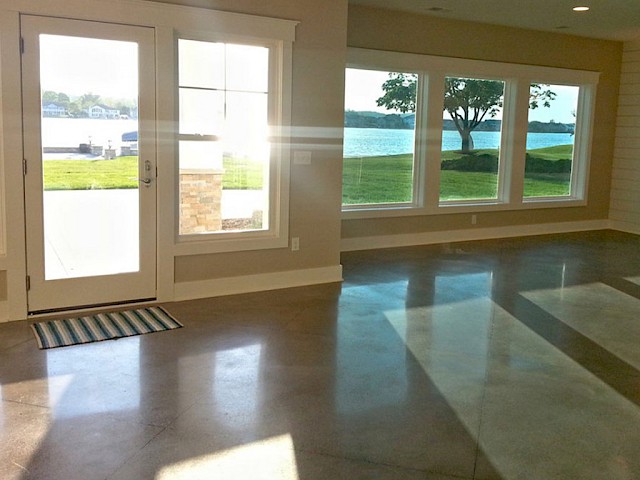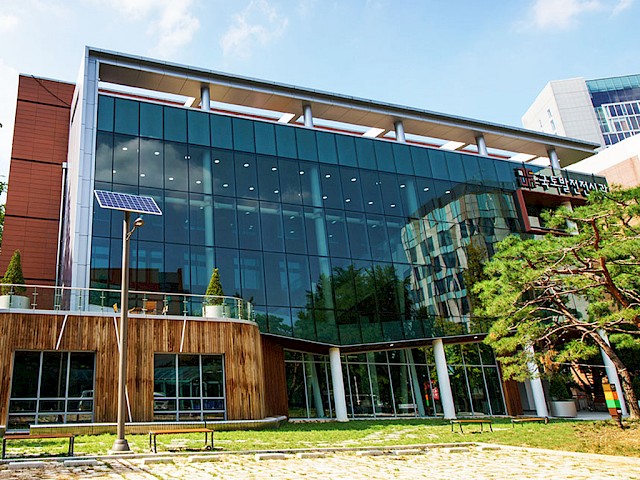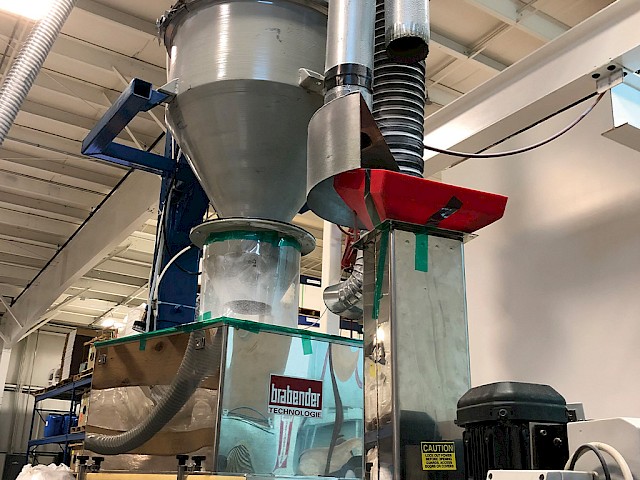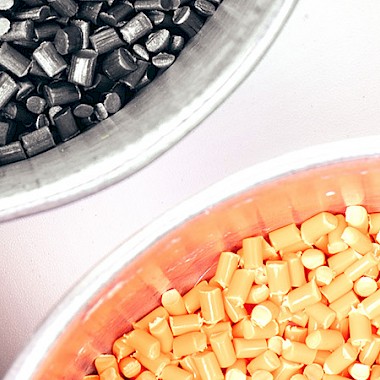Pleotint: self-tinting window glass
Sunlight provides many benefits: it lightens our mood, deepens our sleep and increases our productivity. However, glazed interiors heat up too much when the sun shines in directly through conventional windows, and they have to be darkened using blinds and shades. Pleotint LLC, an international market leader in dynamic glass, has developed a self-tinting window glass, Suntuitive Glass, which adapts to changing sunlight conditions throughout the day and is available at affordable prices.
FLUX spoke with Dr. Harlan Byker, CEO of Pleotint, about the production of Suntuitive Dynamic Glass and about what role Kubota Brabender Technologie feeders play in that process.
It’s the early 1980s and after about a year of research, the R&D team headed up by Dr. Harlan Byker had found exactly the “right mixture”. And this is precisely the mixture that would transform a small company into a publicly traded corporation valued at billions today. Byker and his team had invented the chemistry portion of the first commercially successful electrochromic application, an automatic dimming rear view mirror for motor vehicles that has sold more than 400 million units to date
From dimming mirrors to intuitive architectural glass
With that success Dr. Byker changed his focus to architectural glass. His plan was to make this glass more intuitive and bring thermal comfort into interior spaces – without limiting natural light. This idea spawned Pleotint LLC. The company is now the global market leader in dynamic glass and consists of a glass fabrication division, an interlayer extrusion operation, research & development and of course the innovative Suntuitive Dynamic Glass product line.
Suntuitive Glass is perfect for daylighting and thermal comfort – the illumination of buildings by natural light through the strategic positioning of skylights and windows.Dr. Harlan Byker, CEO of Pleotint LLC.
How does self-tinting dynamic glass work?
Thermochromic materials in a coated film between panes of glass react to sunlight and heat and tint the windows. Suntuitive Dynamic Glass Suntuitive Dynamic Glass’ dynamic glass technology adapts to changing sunlight conditions to maximize natural daylight throughout the day. As the sun rises and sunlight begins to heat the glass, the Suntuitive interlayer begins to darken, which we perceive as tinting. The interlayer uses the sun’s energy to mitigate solar heat and glare when there is direct sunlight on the window, while still allowing maximum daylight by clearing up when there is indirect sunlight.
Added value:
- optimum sense of space
- best interior lighting conditions
- naturally comfortable temperatures in rooms
- energy savings when heating or cooling a building
Interview with Dr. Harlan Byker
FLUX: Dr. Byker, tell us a bit more about PLEOTINT’s beginnings and its growth with Suntuitive Glass, which is now the most used dynamic glass technology worldwide.
Harlan Byker: Pleotint completed its first commercial project in 2010 – soon it will celebrate more than ten years of continued excellence in dynamic glass. Since 2010, Pleotint has broadened its operations from local installs and fabrication at our location in Michigan, USA to installations in 30 countries around the world in cooperation with a global network of certified fabrication partners, making Suntuitive the most adopted dynamic glass technology ever.
FLUX: How would you describe this “dynamic glass technology” in just a few words? What are vital factors in the production process?
Harlan Byker: Suntuitive Dynamic Glass self-tints under direct sunlight. This process takes place in a proprietary PVB interlayer sandwiched between the glass. To produce a high-quality, consistent product, many interlayer fabrication as well as glass fabrication variables need to be controlled within a stringent set of ranges.
FLUX: What are the major benefits of Suntuitive Dynamic Glass and its unique passive technology that adapts to the sun’s changing intensity throughout the day?
Harlan Byker: What makes Suntuitive Dynamic Glass unique is that its smart technology really is built into the glass. This means no external systems, in the form of controls wired to the glass and power supplies, are necessary. This results in an installation that is exactly like conventional glass, not complicating the building process in any way.
FLUX: Why did you choose Kubota Brabender Technologie and what kind of feeders do you use?
Harlan Byker: We opted for Kubota Brabender Technologie feeders, because of their versatile feeder technology and product offerings. They are ideal for developing and manufacturing Suntuitive films, which requires precision ingredient feeding and a high degree of accuracy. We currently use FlexWall® 80 and DDSR20 type feeders.
FLUX: How has Kubota Brabender Technologie’s high-precision feeding equipment helped you in your manufacturing process?
Harlan Byker: Brabender feeders have met our operational feeder requirements, ensuring consistently accurate performance, which meets our film manufacturing needs. Our feed application incorporates a sophisticated combination of materials and additives, which include a powdered polymer resin. Consistently accurate feed rates are crucial to the process.
FLUX: Within your core markets, where do you see the next generation of innovations taking you?
Harlan Byker: Dynamic Glass itself is still considered a ‘next-gen innovation’ as it is pre-mass adoption. In the coming years, we will see a market-wide awareness of the products and massive acceptance, as the core markets realize the potential and benefits of this field-tested and durable product.
Apart from that, at Suntuitive Dynamic Glass we are already working on new applications in areas such as bullet-resistant glass with solar heat gain control, as well as dynamic single-pane glazing, which will provide a safer built environment and open up markets in new areas around the world. Other applications could be in heavy and farm equipment, public transit and automotive. These are exciting times for the next generation of glass!





